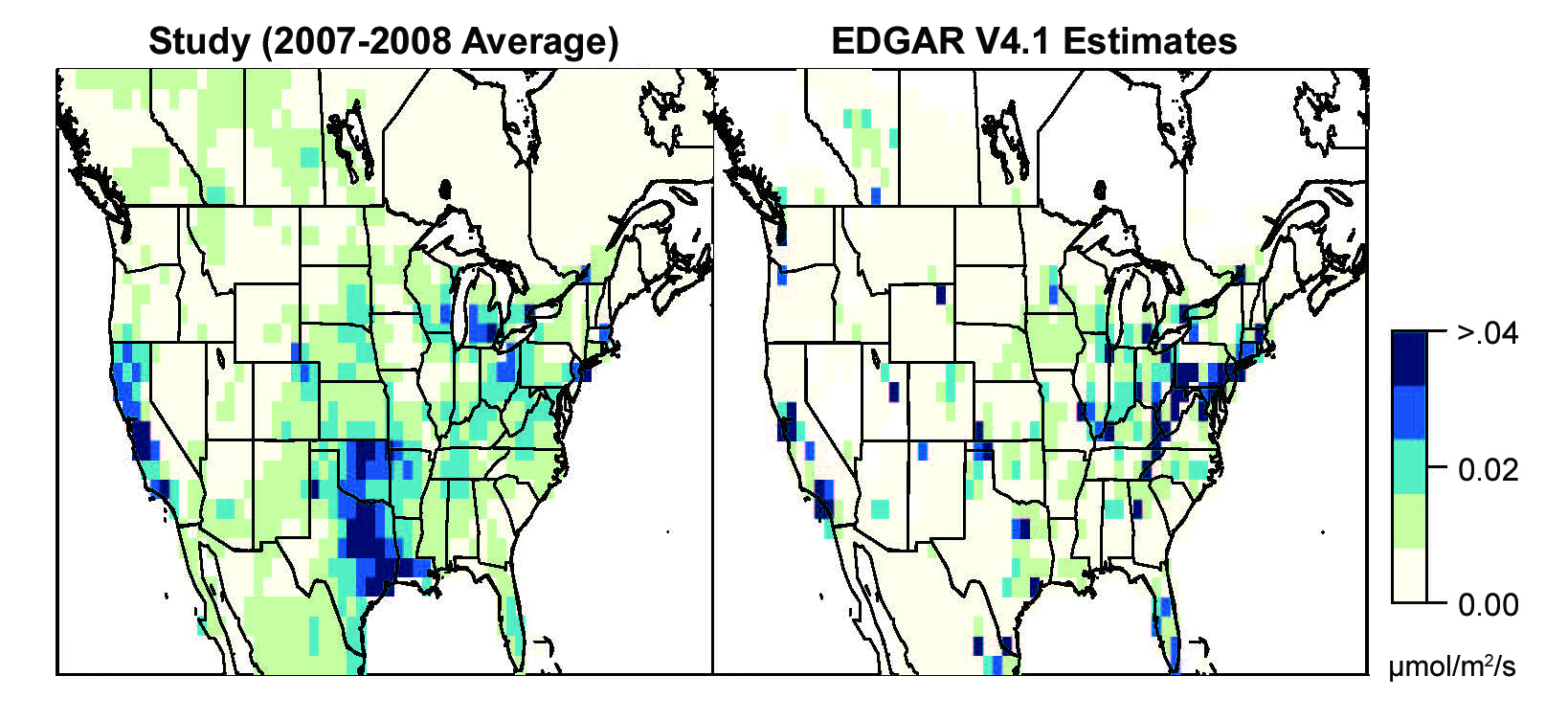Reality Check: Estimates for Human-Caused Methane Emissions in the U.S. Appear Off by 50%
Submitter:
Biraud, Sebastien Christophe — Lawrence Berkeley National Laboratory
Area of research:
Aerosol Properties
Journal Reference:
Science
Around the nation, states are gearing up to tightly regulate the emission of methane, the second-most-important human-created greenhouse gas, following carbon dioxide. The chief sources of this gas in the U.S. are livestock, natural gas production and distribution, landfills, and coal mining. Existing regulations in some states require reductions as high as 15 percent from current levels by 2020.
Impact
Regulators have traditionally relied on estimates from the U.S. Environmental Protection Agency (EPA) and the international Emissions Database for Global Atmospheric Research (EDGAR) to target reductions. Now, a new study by an international team of researchers from academia and governmental agencies has found that these estimates by EPA and EDGAR may be lower than reality by as much as 50 percent, and estimates for specific types of sources such as natural gas production could be off by even more.
Estimates of methane emissions from a recent study (left panel), compared against the commonly used EDGAR database (right panel), show that methane sources may output more of the gas and affect a wider territory than previously thought.
The study, described in the Proceedings of the National Academy, attempts to quantify the sources and amount of methane generated by human activity in the United States. Researchers used methane measurements from 2007 and 2008 taken from tall towers (nearly 5,000 measurements) and aircraft (more than 7,500 measurements). Much of the data used in this study was gathered by programs supported by the U.S. Department of Energy’s Atmospheric Radiation Measurement (ARM) Climate Research Facility and the U.S Department of Commerce’s National Oceanic and Atmospheric Administration (NOAA) collaborative global greenhouse gas reference network. The study team input this wealth of data into a model that simulated how methane is moved around the atmosphere. This is considered a top-down approach. They then compared their results with data on human population density, economic activity, and oil and gas production in a bottom-up approach.
The bottom-up and top-down approaches yield very different results, showing that current output from the EPA and EDGAR databases underestimates national U.S. methane emissions by a factor of approximately 1.5 and 1.7, respectively.
Summary
“Based on our work, methane emissions from fossil fuel extraction and processing in the south-central U.S. could be approximately 5 times larger than reported in EDGAR, the most comprehensive global methane inventory,” said Sébastien Biraud of Lawrence Berkeley National Laboratory, one of the key researchers on the team. “Effective national and state greenhouse gas reduction strategies may be difficult to develop without more accurate estimates of methane emissions.”


